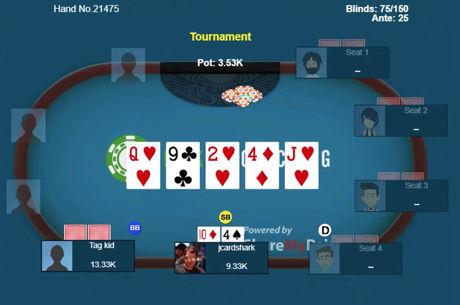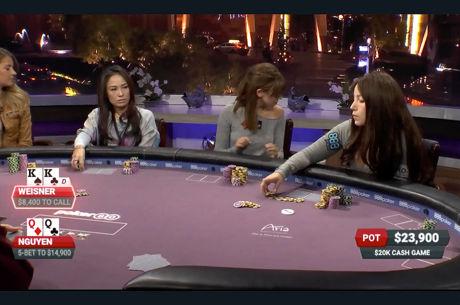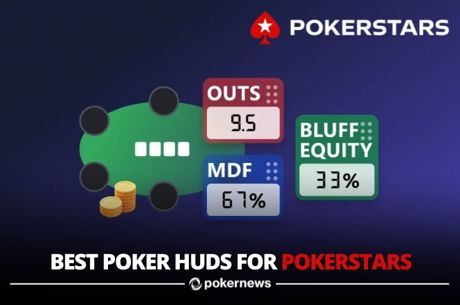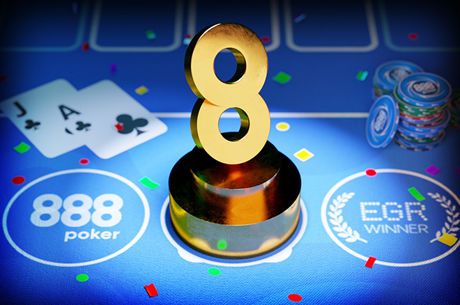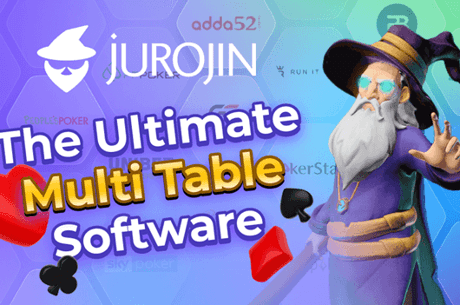What Not to Do Online: Going Broke in a Limped Pot
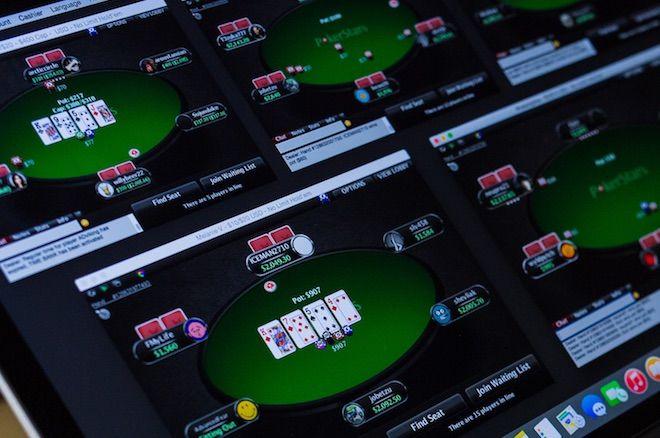
Old wisdom dies hard. With many online poker players these days starting to experiment with implementing a limping strategy, it is important to recall the much repeated guidance "never go broke in a limped pot."
The following is a hand played online at the 100NL ($0.50/$1) six-handed Zoom tables that demonstrates a player who was unable to heed that very advice.
Anyone Can Have It
The action started with everyone folding around to a regular in the small blind who completed, and the big blind — an inexperienced player and a target at this table — checked. The effective stacks were $125, or 125 big blinds.
The flop came A♥A♦4♥.
Phil Ivey gets pocket aces just as often as anyone else and everyone flops the nuts with the same frequency. So beware of erroneously correlating players' decision-making ability with their ability to flop strong hands or hit the perfect card.
Similarly, always keep in mind that recreational players often do things out of the ordinary, in fact almost by definition. That means such players will be able to show up with hands in certain spots that others may not. Stay vigilant!
Here the regular in the small blind checked the flop to the recreational player in the big blind, who bet pot — $2 into $2. The small blind then check-raised to $8 and the big blind reraised to a whopping $36.
Alarm Bells and Impossibilities
In a limped, blind-versus-blind pot, certain phrases may spring to mind when the flop brings two aces as in this hand and this kind of action ensues. Phrases such as...
- no one can have an ace,
- both players can have an ace,
- the big blind can have more aces,
- the small blind can have more aces,
- the big blind wouldn't check an ace,
- the small blind wouldn't limp an ace
...and so on.
Cleanse these unpure, absolutist thoughts from the stream of your glorious consciousness.
It is true that the big blind might not check back certain hands with an ace in them — AxJx and better, let's say. But that doesn't preclude the big blind from checking back many more hands.
It is also true that a regular in the small blind, even if playing a limping strategy, might raise any ace for value in blind-versus-blind situations against a recreational player in the big blind. Then again, maybe the small blind is zooming through his session and just didn't check to see who his opponent was before he limped.
What is more important here is the information exchanged on the flop by the check-bet-raise-reraise sequence.
The big blind is claiming to have a very big hand, something that can beat Ax5x on this board, certainly. The small blind has a simpler task. He should call with his entire continuing range. Or another way to put it, he should only call or fold. What's tricky is deciding which hands in his range are strong enough with which to call.
Because of the preflop action, one assumes there is not much practical difference between AxJx, AxQx, and AxKx for the small blind. But other smaller aces, like Ax2x, Ax3x, and Ax5x, are not only behind big blind's value range, but way behind.
In a spot like this, if the small blind took the right path to check-raise to $8 for value on the flop, he could actually fold now with these small aces, still confident to get maximum value the times big blind calls, but making a disciplined fold when facing the odd flop reraise.
Where to draw the line between folding Ax5x and calling with AxJx is anyone's guess. Let's see what happened next.
Pressure Cooker
Another reason for the small blind only to call when facing such action is the big blind has inflated the pot to such an extent that it won't be difficult at all for players to get the remainder of their stacks into the pot as the hand goes on.
Sure enough, that's what happened.
The turn was the 5♥, making the board A♥A♦4♥5♥. That completed the flush draw and made a wheel for 3x2x. The small blind checked and the big blind bet $25, about one-third pot.
Now the small blind's requirements for continuing should be clearer. He should expect to be behind often if he has a hand like Ax8x without the 8♥. And because his range to call the flop reraise is so strong, with so many aces, now flushes, and full houses, he should fold some hands to this action. In any case, he called again.
The river was the 2♠, completing the board A♥A♦4♥5♥2♠. The small blind checked and the big blind moved all in for $62 more.
If the small blind was sticking around with hands like Ax6x through Ax10x, this would look like the perfect runout of cards to get away from this hand. Sometimes the board runs out so you can get away.
The small blind did not feel that way. Perhaps he'd had a lot of experience with the big blind and some crazy fireworks. (I doubt that personally, but I haven't a complete hand history for the two players.) The small blind called with A♣10♠ and got the bad news. The big blind had flopped it with A♠4♦.
The flop reraise, particularly to that big size, is a rare event. The small blind should get stacked here when he has AxKx — there is not much way around it. And, of course the small blind should also get stacked with 4x4x.
But the small blind has to draw the line somewhere, and Ax10x without a heart on this turn and this river is nothing more than a hand that was worth something once.

